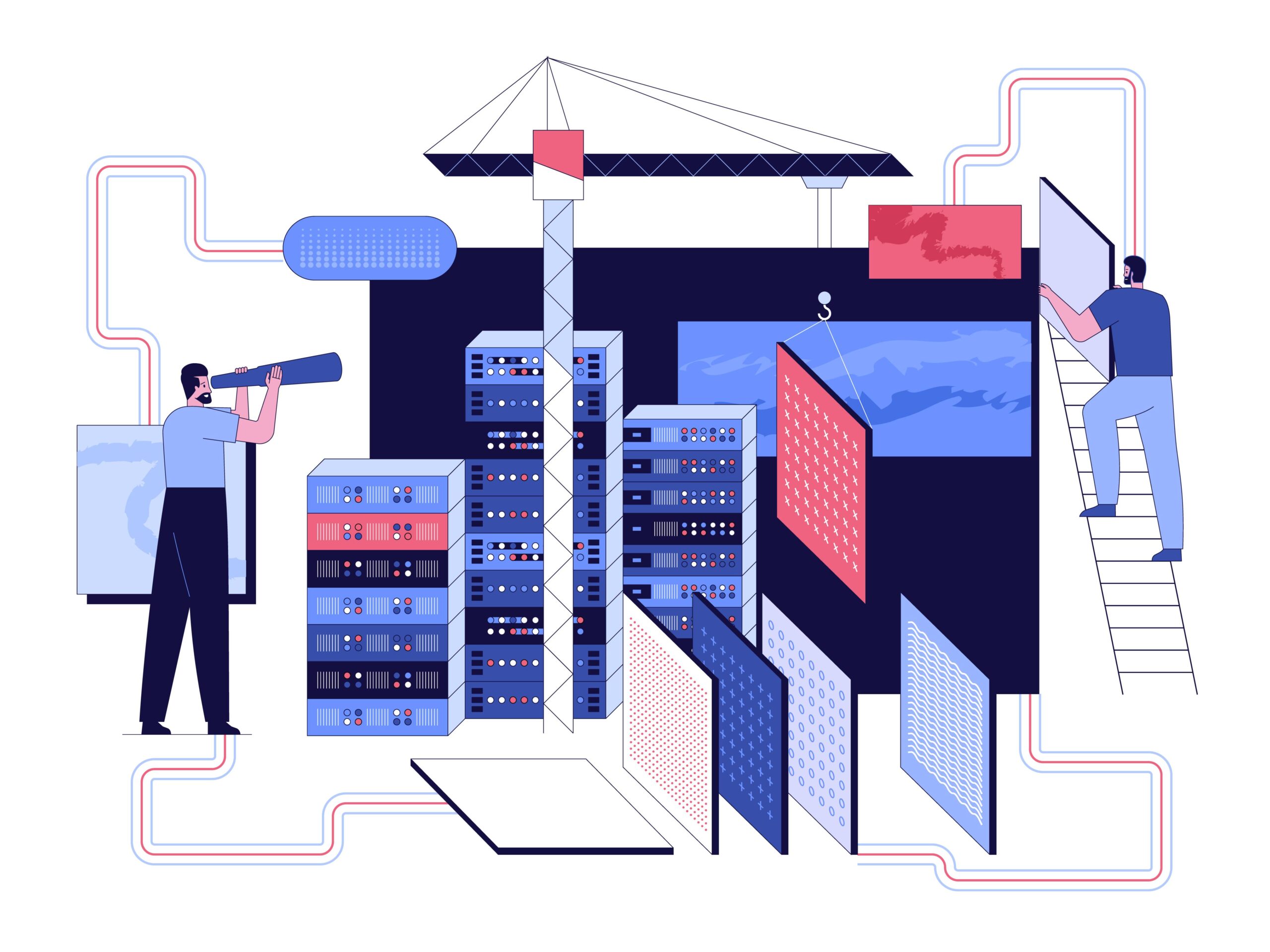Have you ever wondered how massive online platforms like Amazon, Netflix, or Google function seamlessly, delivering lightning-fast performance and an exceptional user experience? The secret lies in creating an appropriate IT Architecture.
This blog post will delve into the world of IT architecture, which seems complex to the uninitiated. It will uncover the various types of IT architecture and the value or benefits it gives an organization, whether large, medium, or small.
What is IT Architecture?
IT Architecture is the blueprint that governs the design, implementation, and maintenance of an organization’s information technology infrastructure. It is the foundation upon which all software, hardware, and networking components are integrated and aligned to support business objectives.
Types of IT Architecture:
The concept of IT architecture has evolved and taken various forms over the years. Among these, three distinct types have gained popularity, largely due to their strong alignment with business objectives. Let’s take a deeper look at each of these three categories.
1. Enterprise Architecture (EA):
EA encompasses the entire organization, providing a holistic view of its processes, data, applications, and technology. It ensures alignment between business strategy and IT systems.
2. Software Architecture:
As the name suggests, software architecture deals with the structure, behavior, and interactions of software components within an application or system. It guides the development process and ensures quality, maintainability, and scalability.
3. Infrastructure Architecture:
This architecture concentrates on the physical and virtual components that underpin an organization’s IT ecosystem. It encompasses servers, storage systems, networks, other hardware elements, virtualization, and cloud technologies.
4 Key Components of the EA Model
EA model offers successful IT architecture due to its four components.
1. Business Architecture:
This part ensures that IT systems efficiently support and enable the organization’s business processes, strategies, and goals. Business architecture is essential because it facilitates a smooth integration between organizational requirements and technological advancements by coordinating IT initiatives with fundamental business goals.
2. Data Architecture:
In today’s data-driven world, managing information effectively is paramount. Data Architecture defines the standards, policies, and models that govern data collection, storage, integration, and utilization within an organization. It ensures data integrity, security, and accessibility across various systems and applications.
3. Application Architecture:
This component focuses on designing, developing, and integrating software applications that support business processes. It encompasses application frameworks, patterns, and best practices, ensuring applications are modular, scalable, and maintainable.
4. Technology Architecture:
Technology Architecture underpins the entire IT ecosystem, providing the physical and logical infrastructure for applications and data. It involves hardware, software, networking, security components, and emerging technologies like cloud computing and Internet of Things (IoT) platforms.
Importance of IT Architecture
- Alignment with Business Objectives: IT Architecture ensures that technology investments and initiatives align closely with the organization’s business strategies, goals, and processes. This alignment maximizes the return on investment (ROI) and drives tangible business value.
- Scalability and Flexibility: Well-designed IT Architecture allows organizations to scale their systems and infrastructure as their business grows. It also provides the flexibility to adapt to changing market conditions, customer demands, and technological advancements.
- Reduced Complexity and Costs: IT Architecture simplifies managing and maintaining complex IT environments by establishing standards, guidelines, and best practices. This streamlining leads to reduced operational costs and improved efficiency.
- Improved Communication and Collaboration: IT Architecture fosters a common language and understanding among stakeholders, facilitating effective communication and collaboration between business units, IT teams, and external partners or vendors.
- Future-proofing: Implementing a well-defined IT Architecture enables organizations to anticipate and accommodate future technological changes, ensuring their systems remain relevant and competitive in an ever-evolving digital landscape.
Best Strategies for IT Architecture
Developing and implementing an effective IT Architecture requires careful planning and execution. Here are some of the best strategies to consider:
Adopt a Framework
Leverage industry-recognized frameworks such as TOGAF (The Open Group Architecture Framework), Zachman, or FEA (Federal Enterprise Architecture) as a starting point. These frameworks provide structured methodologies, guidelines, and best practices for designing and managing IT architectures.
Embrace Modularity and Standardization
Design modular and standardized components that can be easily integrated, replaced, or scaled. This approach promotes flexibility, interoperability, and cost-effectiveness by reducing redundancy and complexity.
Implement Service-Oriented Architecture (SOA)
SOA principles encourage the development of loosely coupled, reusable services that can be easily composed and orchestrated to meet changing business needs. This approach enhances agility and facilitates integration across different systems and platforms.
Leverage Cloud Computing
Cloud computing offers scalability, cost-efficiency, and rapid deployment capabilities. Incorporate cloud strategies, such as hybrid or multi-cloud architectures, into your IT Architecture to take advantage of these benefits while maintaining control and security.
Prioritize Security and Compliance
Embed security and compliance considerations from the outset rather than treating them as an afterthought. Implement secure coding practices, data encryption, access controls, and regular risk assessments to protect your organization’s assets and ensure regulatory compliance.
Implement Continuous Improvement
Treat IT Architecture as an iterative process that evolves with changing business needs, technological advancements, and industry best practices. Regularly review and refine your architecture to maintain its relevance and effectiveness.
What to Look for in an IT Architect?
Finding an expert with a broad skill set and in-depth knowledge of technical and business aspects is essential when looking for an IT architect. Here are some key qualities and skills to look for in an IT Architect:
1. Technical Expertise
First, an IT architect must possess a robust foundation in various technical disciplines. This includes but isn’t limited to, knowledge of network architecture, software development, and system design. They should be well-versed in:
- Current technologies: Understanding the latest in cloud computing, databases, and cybersecurity.
- Programming languages: Familiarity with Java, Python, or Scala is often crucial.
- Frameworks and tools: Experience with enterprise frameworks (e.g., TOGAF, Zachman) and tools like Kubernetes or Docker can indicate a well-prepared candidate.
2. Strategic Thinking
An IT architect’s role isn’t just about keeping the tech running; it’s about steering the tech ship toward future horizons. Look for someone who can:
- Align technology with business goals
- Innovate and problem-solve
3. Communication Skills
How will they rally the troops if they can’t communicate their grand ideas? An effective IT architect should be able to communicate complex concepts clearly and persuasively to non-technical stakeholders.
4. Cultural Fit
Lastly, the IT architect must fit well with your business’s culture. To guarantee effortless integration into your team, they should be driven by comparable objectives and share the same values as your organization.
Conclusion
IT Architecture is no longer a luxury—it’s necessary for organizations that want to thrive and stay ahead of the competition.
Implementing an effective IT Architecture requires careful planning, strategic thinking, and the adoption of industry-recognized frameworks and best practices.
Ultimately, IT Architecture is the foundation upon which organizations can build resilient, agile, and innovative systems that support their growth ambitions and deliver exceptional customer experiences. By investing in Professional IT outsourcing services for well-designed IT Architecture, organizations can unlock technology’s potential and position themselves as leaders in an increasingly digital world.


